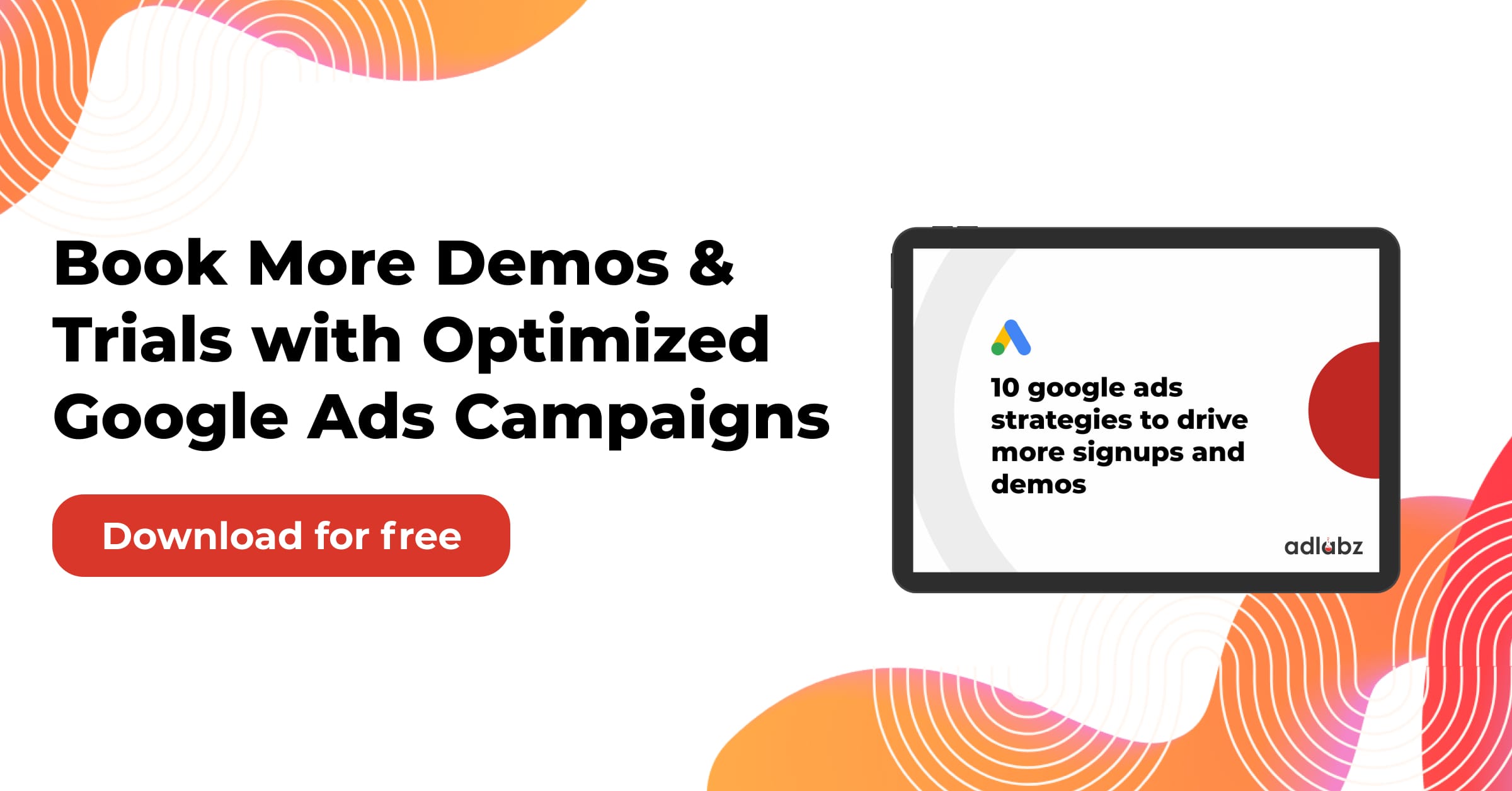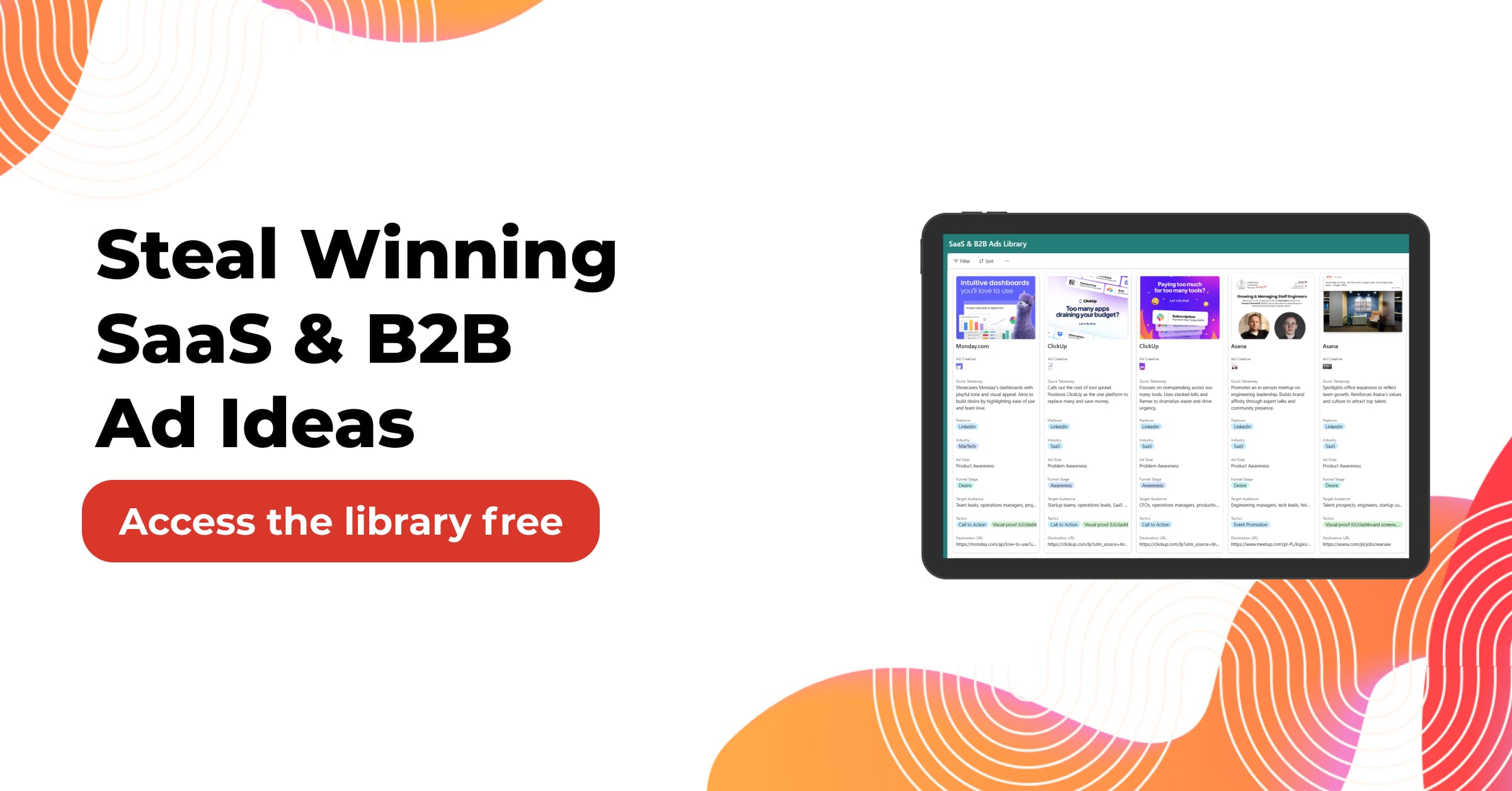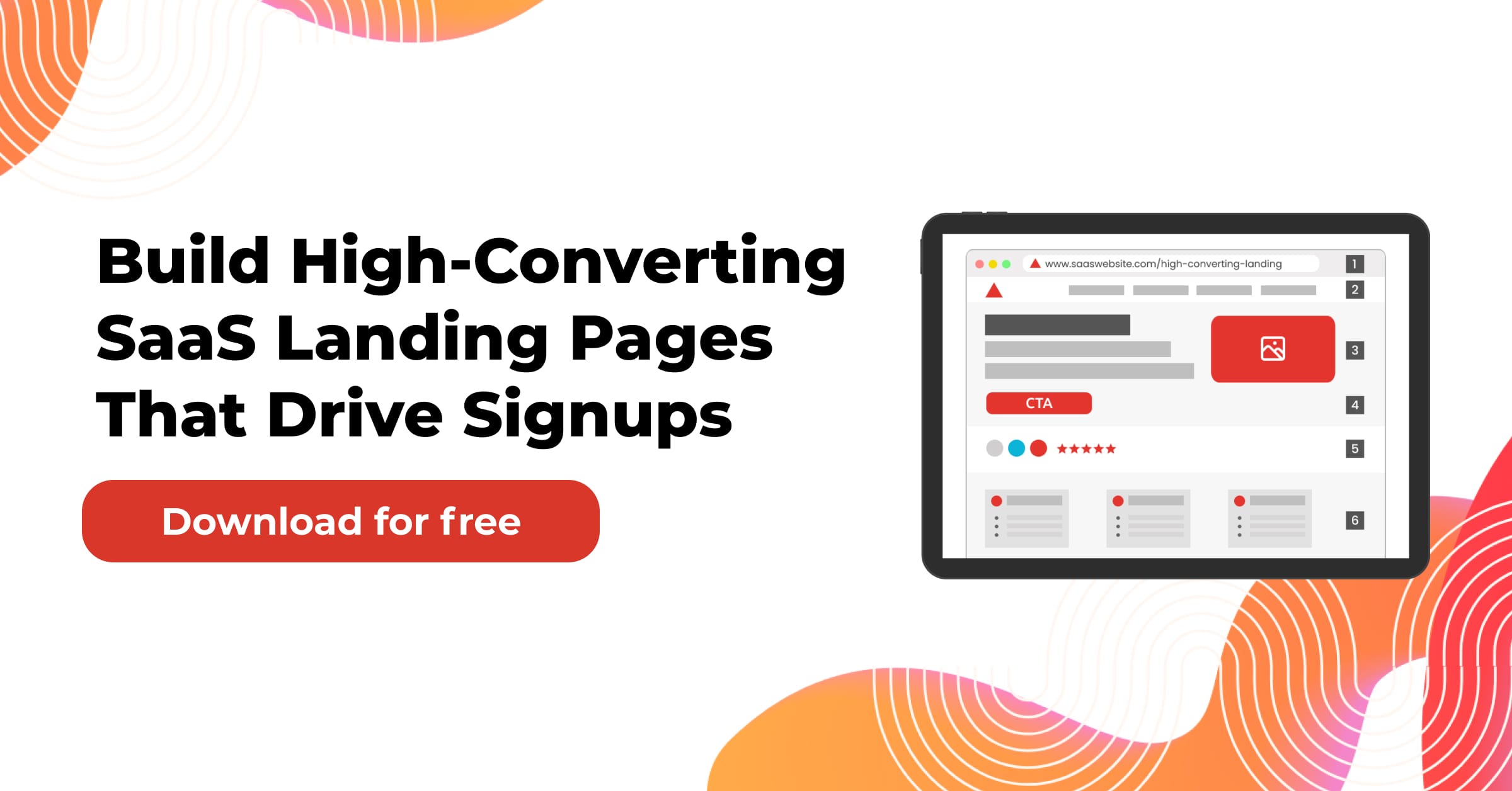What Exactly Is a SaaS Business Model?
SaaS (Software as a Service) is a digital business model in which companies offer software over the cloud. Customers typically pay regularly—monthly or annually—to access the platform.
Instead of owning the software, users subscribe to it. This lowers the upfront cost and shifts revenue into a predictable stream.
Example:
Slack, Dropbox, and HubSpot all use the SaaS business model. They host software on their servers and offer tiered pricing based on features or usage.
Jump to:
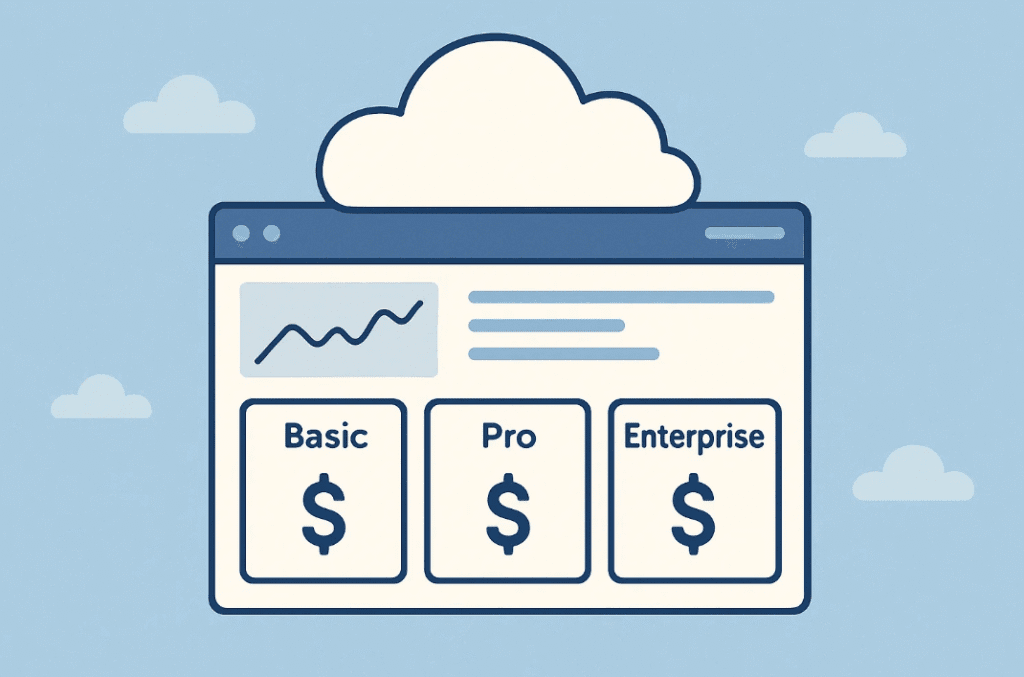
What Is the Subscription Box Model?
The Subscription Box Model is a physical business model where products are bundled and delivered to customers at regular intervals—usually monthly. These are often curated based on customer preferences.
Example:
Birchbox sends out beauty products monthly. Dollar Shave Club ships grooming products on a schedule.
Which Business Model Has Lower Startup Costs?
SaaS Wins in Scalability, But Not Always in Cost
While the SaaS model scales faster due to its digital nature, it’s often expensive upfront. You’ll need:
- Developers
- Cloud infrastructure
- UX/UI designers
- Time to build MVP (Minimum Viable Product)
Subscription Box models, in contrast, can be launched with less technical overhead. All you need is:
- A supplier/distributor
- Packaging
- Logistics partner
- A basic eCommerce website
| Startup Element | SaaS Business Model | Subscription Box Model |
|---|---|---|
| Tech Development | High | Low |
| Inventory Management | None | Essential |
| Shipping Costs | None | High |
| Time to Launch | Longer | Faster |
Visual suggestion:
Side-by-side comparison graphic: Laptop with code (SaaS) vs. cardboard box and delivery truck (Subscription Box).
How Do You Make Money with Each Model?
Recurring Revenue Is Key in Both—But Delivery Is Different
SaaS revenue is based on usage tiers, upsells (e.g., extra features), and freemium upgrades. Your profit comes from margins on software access and low delivery costs.
Subscription Box revenue relies on margins from buying bulk products and reselling them. Upsells happen through product add-ons or premium box tiers.
Tip: SaaS can often achieve 80-90% gross margin, whereas Subscription Box models typically hover around 30-50%.
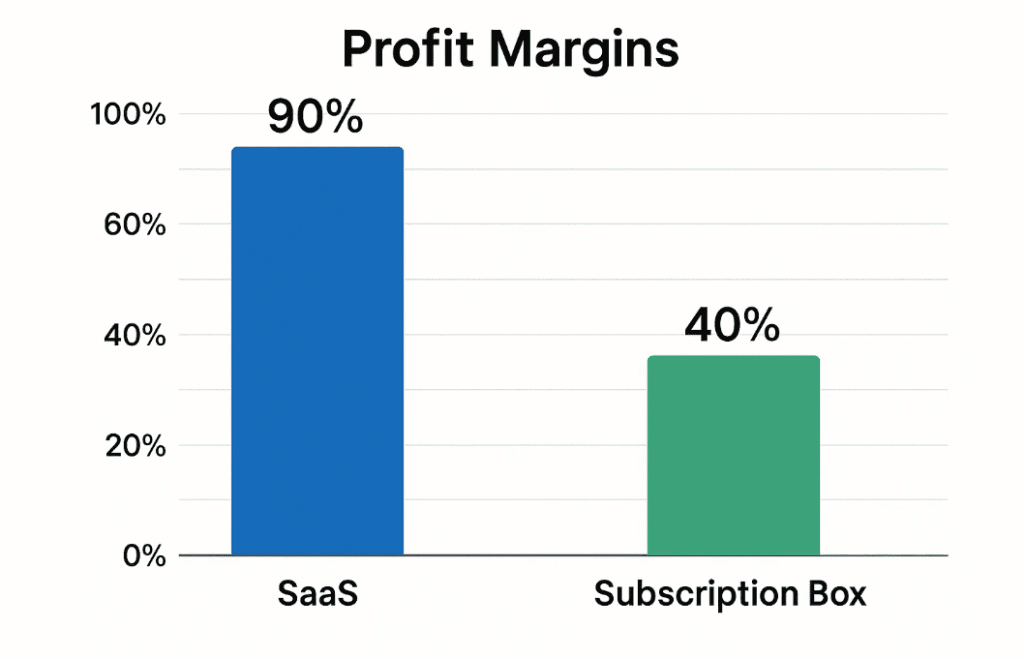
Which Model Builds Customer Loyalty Faster?
Subscription Boxes Tap Into Emotion and Surprise
The Subscription Box model often feels personal—customers unbox surprises every month. This creates emotional connection and habit.
SaaS, however, builds loyalty through utility and stickiness. Once embedded in a customer’s workflow (think: CRM or team chat), they rarely switch.
| Loyalty Drivers | SaaS | Subscription Box |
|---|---|---|
| Habit-forming Usage | Strong (daily use) | Moderate |
| Personal Touch | Limited | High (curated items) |
| Community Potential | Product forums | Social unboxing videos |
Which Is Easier to Cancel or Churn?
SaaS Churn Hurts Less Often, Subscription Boxes Drop Hard
SaaS businesses usually experience lower churn when the product is mission-critical. But if it’s a non-essential tool, users cancel quickly.
Subscription boxes, though, see high churn after the novelty wears off. Retention often drops after 3–6 months if the box isn’t evolving.
Stat:
According to McKinsey, the average subscription box loses 70% of its customers within the first 12 months.
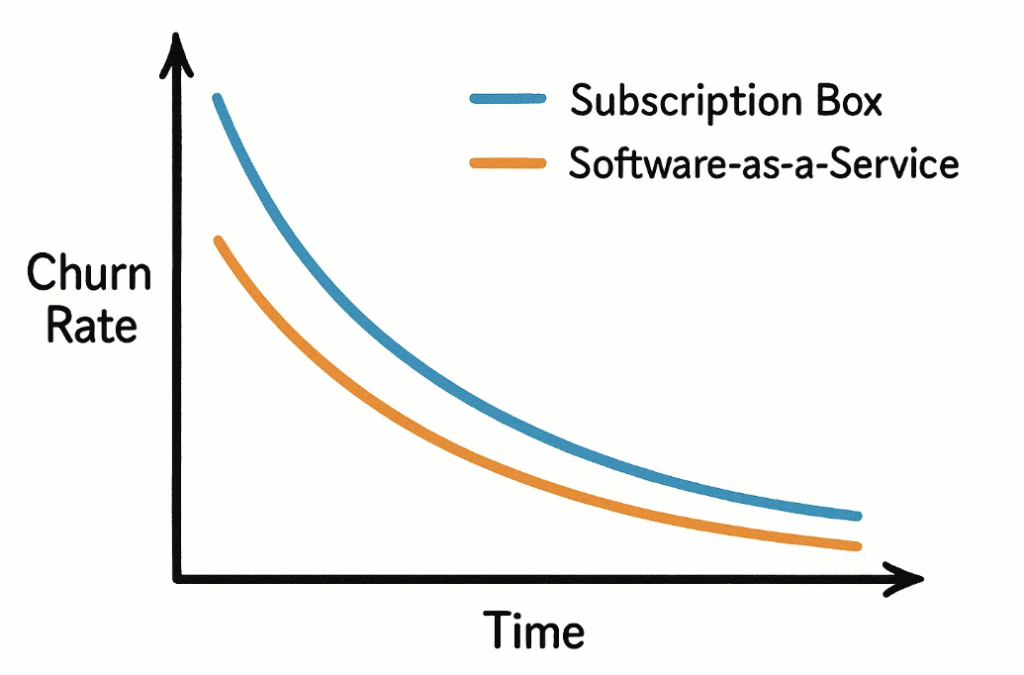
What’s the Cost of Serving One Customer?
SaaS Scales Better at Lower Cost Per User
Once your software is built, the cost of serving one more SaaS customer is close to zero (excluding support or bandwidth). You can serve thousands with the same infrastructure.
Subscription boxes, on the other hand, have physical limitations:
- Packaging
- Shipping
- Inventory
- Fulfillment costs
These add up with each new customer.
| Per-Customer Cost | SaaS Model | Subscription Box |
|---|---|---|
| Marginal Cost | Very Low | High |
| Fulfillment Required | No | Yes |
| Customization Effort | Code-based | Manual |
What Kind of Marketing Works Best?
SaaS Relies on Education, Subscription Boxes on Experience
SaaS products benefit from content marketing, SEO, webinars, and comparison pages. They must educate customers on why the tool matters.
Subscription Box models thrive on visual marketing—Instagram, TikTok, and influencer unboxing. It’s about emotion, surprise, and aesthetics.
| Channel | SaaS Business Model | Subscription Box Model |
|---|---|---|
| SEO Blog Content | ✅ Essential | ⚠️ Optional |
| Influencer Marketing | ⚠️ Sometimes | ✅ Vital |
| Retargeting Ads | ✅ Effective | ✅ Effective |
| UGC & Unboxing | ⚠️ Rare | ✅ Everywhere |
Which Model Offers Better Predictability?
Both Are Subscription-Based, But SaaS Wins on Metrics
Both models are based on monthly recurring revenue (MRR), but SaaS is easier to forecast because usage is digital and tied to active sessions or logins.
Subscription boxes rely on inventory cycles, shipping delays, and the physical supply chain, adding unpredictability.
| Revenue Consistency | SaaS | Subscription Box |
|---|---|---|
| Forecast Accuracy | High | Moderate |
| Inventory Dependencies | None | High |
| Supply Chain Risk | Low | High |
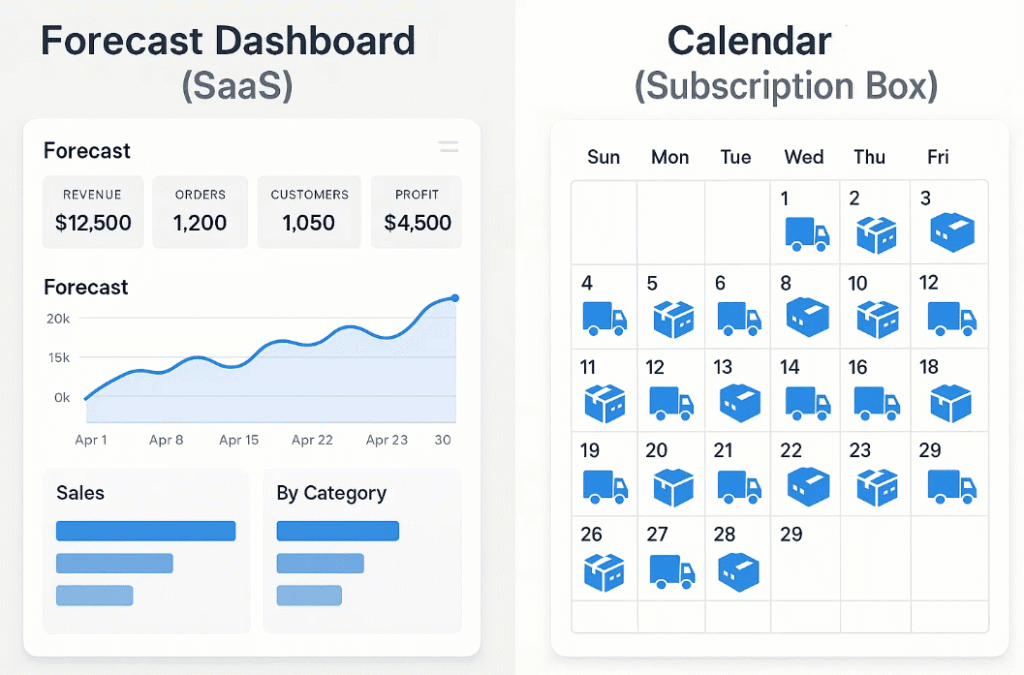
Which Business Model Grows Faster?
SaaS Scales Exponentially. Subscription Boxes Grow Linearly.
Because it’s digital, SaaS can grow fast. Once your code is stable, adding users costs little. Many SaaS companies reach millions in revenue without needing physical expansion.
Subscription Boxes need to grow physical ops—more boxes, warehouse space, fulfillment staff. Growth is tied to logistics.
Example:
Slack grew to millions of users without shipping a single physical product. In contrast, a subscription box like BarkBox needs warehouse expansion to support more dog owners.
Related Article: https://www.adlabz.co/what-is-the-saas-business-model-a-complete-guide
Which Model Gets More Investor Interest?
SaaS Has Higher Valuations—But Subscription Boxes Are Trendy
Investors love SaaS because of its high margins, predictable revenue, and fast growth potential. It often commands 10x–20x revenue multiples.
Subscription Boxes attract attention for viral growth but usually have lower profit margins and harder scaling paths.
| Investment Criteria | SaaS | Subscription Box |
|---|---|---|
| Gross Margins | 80–90% | 30–50% |
| Scalability | High | Moderate |
| Tech/IP Advantage | Yes | Usually No |
| Market Hype | Moderate | High |
Final Verdict: Which Business Model Is Right for You?
The best business model depends on you:
- Skills (tech vs. logistics)
- Resources (capital vs. time)
- Audience needs (utility vs. delight)
| Factor | Choose SaaS If… | Choose Subscription Box If… |
|---|---|---|
| You’re technical | You can build or manage software | You prefer handling physical ops |
| Need higher margins | You want 80%+ margins | You’re okay with ~40% |
| Love recurring revenue | You want digital subscriptions | You want curated customer delight |
| Want scale | You want 10x growth with low churn | You want a tangible product brand |
Do You Price Each Business Model Effectively?
SaaS Uses Tiered Plans, Boxes Use Flat Pricing
Pricing is where the SaaS business model gets strategic. Companies often adopt a tiered pricing strategy:
- Basic: Limited features or usage caps
- Pro: More power users, integrations
- Enterprise: Custom solutions, onboarding, support
The goal is to capture different segments without creating product confusion.
Subscription Boxes, on the other hand, tend to offer flat pricing. Most brands offer one or two box sizes or delivery frequencies. Complexity in pricing can hurt conversions here.
| Pricing Approach | SaaS Model | Subscription Box Model |
|---|---|---|
| Strategy | Tiered with upsells | Simple flat-rate pricing |
| Flexibility | High (pay-as-you-scale) | Low (usually one or two options) |
| Customization | Usage-based or seat-based billing | Box size or delivery frequency |
Example:
Notion offers a free plan, a $8/month plan, and an enterprise tier with SSO and analytics. Sips By (a tea box) has a $16/month flat rate with no customization tiers.
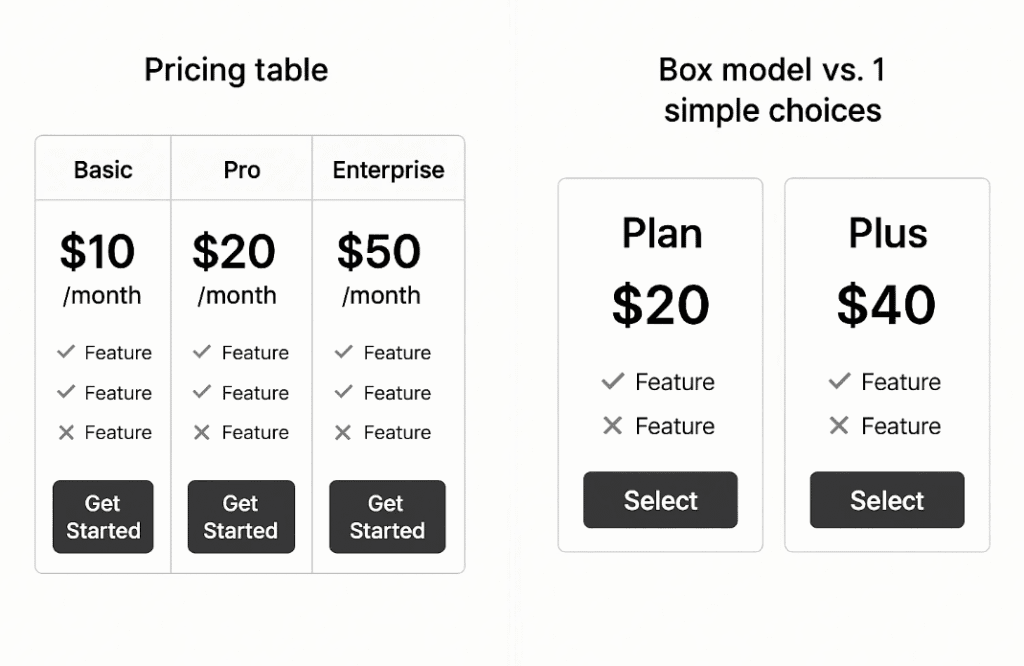
What Kind of Customer Relationships Do They Create?
SaaS Fosters Dependency, Boxes Create Delight
SaaS platforms aim to become mission-critical. If customers depend on your software daily—think Slack or Google Analytics—it becomes extremely hard to switch. These relationships are sticky.
Subscription Boxes, however, rely on delight and anticipation. When the experience gets repetitive or feels less exciting, cancellations increase.
Key Difference: SaaS loyalty is built on functionality. Box loyalty is built on emotion.
| Relationship Type | SaaS Business Model | Subscription Box Model |
|---|---|---|
| Dependence | High if workflow-critical | Low—based on novelty |
| Retention Factors | Usage, performance | Variety, emotional value |
| Support Expectations | Fast, knowledgeable | Friendly, empathetic |
Example:
A marketer might cancel a subscription box if they don’t love the latest theme. But they’ll keep paying for a SaaS tool they use to send emails daily.
How Does Product Development Differ?
SaaS Evolves Digitally; Boxes Require Sourcing & Supply Chain
SaaS development happens in the cloud. You can iterate based on feedback, A/B test features, and deploy code updates instantly.
Subscription Box development involves physical product planning:
- Sourcing new vendors
- Packaging and labeling
- Warehousing and shipping
- Managing inventory turnover
This makes rapid innovation harder.
SaaS MVPs (Minimum Viable Products) can launch quickly with a few core features. Subscription Boxes often require several months of sourcing and production before launch.
Example:
Calendly iterated its onboarding and scheduling UI based on user behavior. In contrast, a candle subscription startup must pre-order inventory months in advance.

Which One Supports Easier Global Expansion?
SaaS Scales Internationally Overnight
One of SaaS’s superpowers is its ability to go global fast. Once your product is in the cloud, anyone with internet access can use it. Add translations and international billing, and you’re in business worldwide.
Subscription Boxes face big challenges here:
- Shipping costs rise
- Customs delays
- Local warehousing needs
- Packaging regulations
Example:
Canva scaled to over 100 countries without local offices. Subscription boxes like SnackCrate face complex customs when shipping food across borders.
| Expansion Metric | SaaS | Subscription Box |
|---|---|---|
| Cost to Serve Abroad | Very low | High |
| Localization Required | Text/UI | Packaging + Ingredients |
| Delivery Timeline | Instant | 7–21 days |
Which Business Model Is Easier to Pivot?
SaaS Can Be Rebuilt—Boxes Are Harder to Reinvent
If your SaaS tool isn’t working, you can:
- Change your audience
- Shift your pricing
- Rebuild features
- Launch a spinoff app
Because it’s digital, pivoting is faster and cheaper.
Subscription Boxes are tied to logistics. A pivot might mean sourcing completely different suppliers, building new packaging, or creating a new website/brand. It’s far more effort-intensive.
Example:
Buffer started as a tweet-scheduling tool, and then pivoted into a social media management suite. A skincare box trying to become a fitness box? That requires a full reset.
Which Model Gives You Better Data?
SaaS Tracks Everything; Boxes Have Delays
SaaS tools generate real-time data:
- Login frequency
- Feature usage
- Drop-off points
- Support tickets
With this, you can optimize onboarding, pricing, and engagement instantly.
Subscription Boxes don’t provide instant usage feedback. You must rely on:
- Post-purchase surveys
- Customer support trends
- Social media unboxings
- Renewal/cancellation metrics
| Data Feedback Loop | SaaS | Subscription Box |
|---|---|---|
| Speed of Feedback | Real-time | Delayed (monthly) |
| Personalization Power | High (behavioral) | Medium (survey-based) |
| A/B Testing Ease | Easy (digital) | Hard (physical inventory) |
Example:
A SaaS email tool can test CTA button colors live. A box company can only know if the customer liked the product after it ships—and they reply.
Conclusion: Think in Terms of Repeatable Value
Whether you’re leaning toward a SaaS business model or a subscription box model, the goal is the same: build something people want to pay for again and again.
SaaS delivers repeatable value through access. Subscription boxes provide experience through curation.
Both have advantages, but one will align better with your strengths.
You might also be interested:



